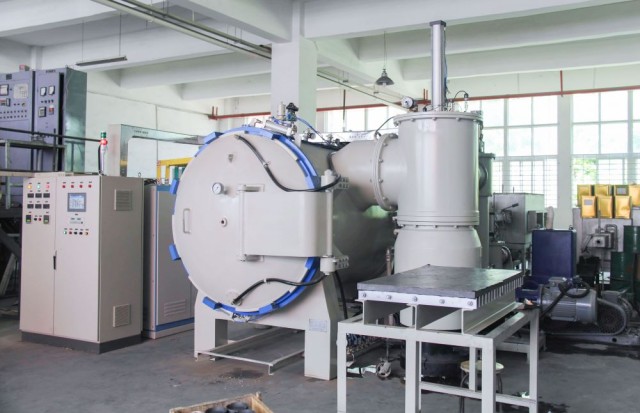Advantages of Vacuum Sintering
Control of Alloy Carbon Content
In vacuum sintering, the precise control of alloy carbon content is a critical advantage, primarily due to the unique atmospheric conditions it offers. The low pressure environment significantly reduces the presence of reactive mediums, such as oxygen and nitrogen, which are known to interfere with carbon levels in alloys. This reduction in reactive elements allows for a more stable sintering process, where the carbon content can be meticulously managed without unwanted side reactions.
The vacuum environment also facilitates a more homogeneous distribution of carbon within the alloy. Traditional sintering methods often struggle with achieving uniform carbon dispersion due to atmospheric contaminants that can cause localized variations. In contrast, vacuum sintering minimizes these contaminants, leading to a more consistent carbon profile across the alloy. This uniformity is crucial for optimizing the mechanical properties of the final product, such as strength and wear resistance.
Moreover, the controlled atmosphere in vacuum sintering allows for the precise tuning of carbon levels to meet specific alloy requirements. This adaptability is particularly beneficial in industries where alloys need to meet stringent performance criteria. For instance, in the production of high-performance cutting tools, the exact carbon content can significantly influence the tool's durability and effectiveness. Vacuum sintering provides the flexibility to adjust these parameters, ensuring that the final product meets or exceeds industry standards.
In summary, vacuum sintering's ability to precisely control alloy carbon content is a result of its low-pressure, low-contaminant environment, which enables a stable and homogeneous distribution of carbon. This control not only enhances the mechanical properties of the alloy but also allows for tailored carbon levels to meet specific industrial demands.
Improved Purity of Cemented Carbide
Vacuum sintering plays a pivotal role in enhancing the purity of cemented carbide by significantly reducing the presence of metal oxides. This process operates under a controlled, low-pressure environment that effectively minimizes the ingress of air and other atmospheric contaminants. The absence of oxygen and water vapor in the vacuum chamber prevents the formation of oxides, which are common impurities that can degrade the mechanical properties of the final product.
Moreover, the vacuum environment facilitates the removal of existing oxide layers on the metal particles, which is crucial for achieving a homogeneous and pure alloy. This purification process not only improves the overall quality of the cemented carbide but also enhances its performance characteristics, such as hardness and wear resistance. The controlled atmosphere ensures that the sintering process remains free from unwanted chemical reactions, leading to a more consistent and reliable product.
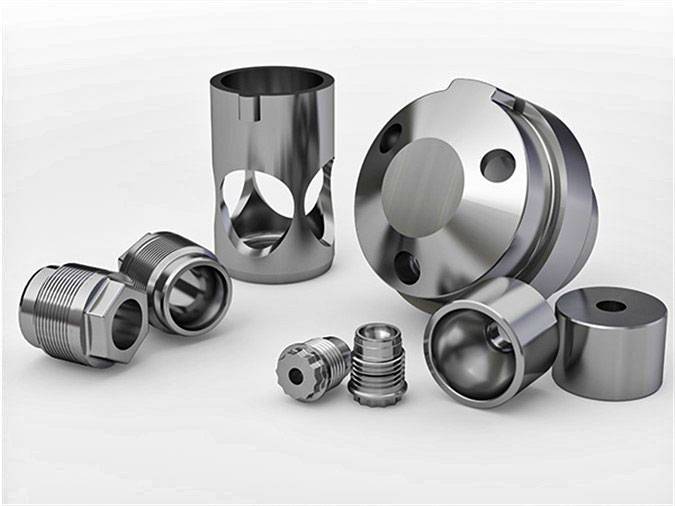
In summary, vacuum sintering is an essential technique for producing high-purity cemented carbide, offering substantial benefits in terms of material purity and performance.
Enhanced Alloy Strength
In the context of vacuum sintering, the reduction of impurity adsorption on hard phases is a critical factor that significantly enhances the strength of alloys. The vacuum environment, characterized by its low pressure and minimal reaction medium, effectively minimizes the presence of impurities such as oxygen, nitrogen, and water vapor. This reduction in impurities is particularly beneficial for alloys containing hard phases like TiC (titanium carbide), where even trace amounts of contaminants can compromise the material's structural integrity and mechanical properties.
The vacuum sintering process not only prevents the formation of oxide films but also improves the wettability between the liquid and carbide phases. This enhanced wettability facilitates a more uniform distribution of hard phases within the alloy, leading to a more homogeneous microstructure. As a result, the final product exhibits superior wear resistance and mechanical strength.
| Benefit | Description |
|---|---|
| Impurity Reduction | Minimizes oxygen, nitrogen, and water vapor, preventing undesirable reactions. |
| Improved Wettability | Enhances the interaction between liquid and carbide phases, promoting a uniform microstructure. |
| Enhanced Wear Resistance | Results in a final product with higher resistance to wear and tear. |
| Increased Mechanical Strength | Provides superior structural integrity and durability. |
Moreover, the vacuum environment aids in the removal of gas content from the pressurized billet, which is crucial for achieving higher densification. This densification process is essential for enhancing the overall strength and performance of the alloy. By eliminating the need for fillers and reducing operational complexity, vacuum sintering offers a streamlined approach to producing high-strength alloys with consistent quality.
Ease of Operation
Vacuum sintering stands out for its user-friendly operation, significantly reducing the complexity typically associated with traditional sintering processes. By eliminating the need for fillers, vacuum sintering streamlines the entire operation, making it more accessible and efficient.
One of the key advantages of vacuum sintering is the removal of filler materials, which are often required in conventional sintering to facilitate the flow of gases and maintain the integrity of the sintering environment. Without fillers, the process becomes more straightforward, requiring fewer steps and less intervention from operators. This simplification not only lowers the risk of errors but also reduces the time and resources needed for setup and operation.
Moreover, the absence of fillers in vacuum sintering minimizes the potential for contamination, which is a common issue in conventional sintering methods. Contaminants can negatively impact the final product's quality, leading to defects and inconsistencies. By operating in a vacuum, the risk of introducing unwanted elements into the sintering process is significantly reduced, ensuring a higher level of purity and consistency in the finished product.
In summary, vacuum sintering's ease of operation is a direct result of its streamlined approach, which eliminates the need for fillers and reduces the complexity of the process. This not only enhances operational efficiency but also contributes to the production of higher-quality, more consistent end products.
Integrated Dewaxing and Sintering
The integration of dewaxing and sintering processes within a vacuum environment offers several key advantages that significantly enhance the overall efficiency and quality of the manufacturing process. By combining these two critical steps, the risk of product oxidation is substantially reduced, which is particularly beneficial for materials that are sensitive to atmospheric conditions. This integrated approach not only minimizes the exposure of the product to oxygen but also helps in maintaining precise control over the carbon content within the alloy.
One of the primary benefits of this integration is the improved control over the carbon content in the alloys. The vacuum environment allows for a more accurate and consistent adjustment of carbon levels, which is crucial for achieving the desired mechanical properties of the final product. This precise control ensures that the alloy maintains its structural integrity and performance characteristics, making it suitable for a wide range of industrial applications.
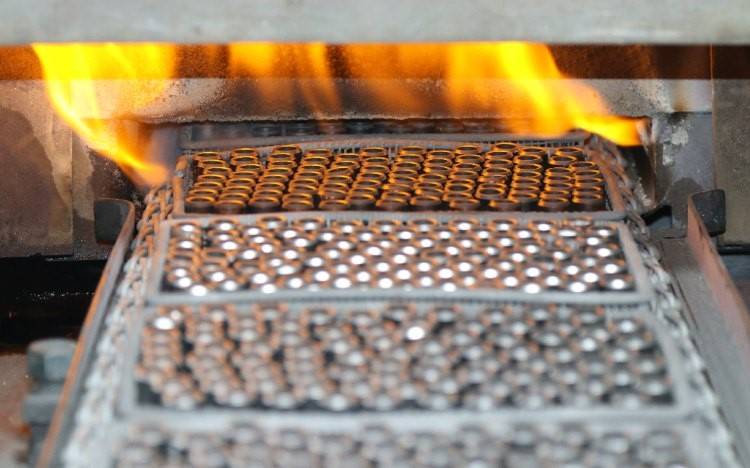
Moreover, the integrated process simplifies the overall manufacturing workflow by eliminating the need for separate dewaxing and sintering stages. This streamlining reduces the operational complexity and the potential for errors, leading to a more efficient and reliable production process. The combined approach also contributes to cost savings by optimizing the use of resources and reducing the time required for each manufacturing cycle.
In summary, the integration of dewaxing and sintering within a vacuum environment not only improves the efficiency of the manufacturing process but also enhances the quality and consistency of the final product by minimizing oxidation and ensuring precise carbon control.
Multi-Atmosphere Control
Multi-atmosphere control in vacuum sintering furnaces is a sophisticated feature that allows for the precise regulation of temperature and atmospheric conditions across different segments of the furnace. This capability is particularly beneficial for advanced sintering techniques, such as gradient alloy sintering, where varying conditions are necessary to achieve specific material properties.
For instance, gradient alloy sintering involves creating a temperature gradient within the furnace to produce materials with varying compositions and properties along their length. This technique is invaluable for creating components that require different mechanical or chemical characteristics in different sections. By controlling the atmosphere and temperature in a segmented manner, manufacturers can optimize the sintering process to achieve the desired material properties, such as enhanced strength, wear resistance, or thermal conductivity.
| Segment | Temperature Control | Atmosphere Control | Application |
|---|---|---|---|
| Segment 1 | Low to medium | Reduced oxygen | Pre-sintering |
| Segment 2 | Medium to high | Controlled nitrogen | Alloy formation |
| Segment 3 | High | Minimal impurities | Final densification |
The ability to adjust these parameters dynamically allows for greater flexibility in the sintering process, enabling the production of high-quality, customized materials that meet specific industrial requirements. This level of control not only enhances the final product's performance but also reduces waste and improves process efficiency.
Environmental Benefits of Vacuum Sintering
Reduction of Atmosphere Contaminants
Vacuum sintering significantly diminishes the presence of detrimental atmospheric components such as water, oxygen, and nitrogen. By creating an environment with minimal reactive elements, this process effectively mitigates the risk of unfavorable chemical interactions. The controlled vacuum conditions ensure that these harmful elements are reduced to trace levels, thereby preventing any adverse reactions that could compromise the integrity and quality of the final product.
This method not only safeguards the material from contamination but also contributes to the overall enhancement of the alloy's properties. The absence of reactive gases in the sintering chamber allows for a more homogeneous distribution of elements, leading to improved mechanical properties such as strength and wear resistance. Furthermore, the reduction of these contaminants aids in achieving higher densification rates, as the removal of gas pockets within the material becomes more efficient under vacuum conditions.
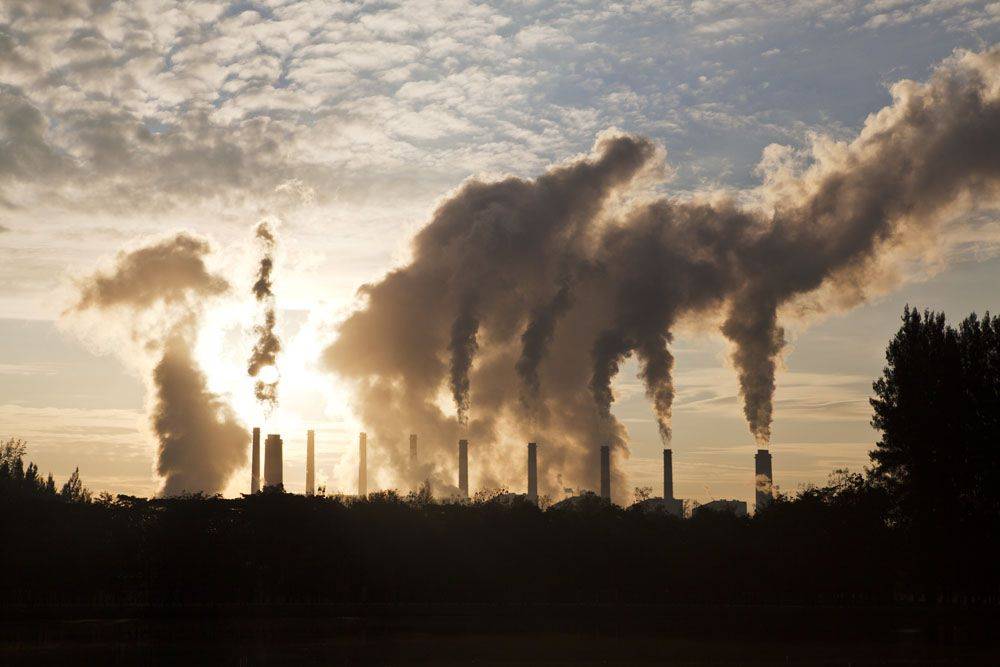
The environmental benefits of vacuum sintering extend beyond just material quality; they also include significant cost savings. By minimizing the need for post-processing to remove impurities, manufacturers can streamline their operations and reduce waste, ultimately leading to more sustainable production practices.
Enhanced Material Properties
The vacuum environment in sintering furnaces plays a crucial role in refining the properties of alloys, particularly cemented carbides. By effectively removing oxide films, the vacuum setting significantly improves the wettability between the liquid and carbide phases. This enhanced wettability is pivotal as it facilitates a more uniform distribution of the liquid phase throughout the carbide matrix, leading to a more homogeneous microstructure.
Moreover, the absence of atmospheric contaminants such as oxygen and nitrogen in the vacuum environment prevents the formation of detrimental intermetallic compounds and oxides, which can weaken the material's integrity. This purification process not only enhances the mechanical properties but also contributes to higher densification rates, as the reduced gas content in the material allows for easier gas removal during the sintering process.
The improved material properties resulting from vacuum sintering are multifaceted:
- Increased Hardness and Wear Resistance: The elimination of impurities and the formation of a denser microstructure result in higher hardness and superior wear resistance, making the materials ideal for applications requiring durability and longevity.
- Enhanced Toughness: The uniform distribution of the liquid phase and the absence of defects contribute to improved toughness, allowing the material to withstand greater mechanical stresses without fracturing.
- Better Thermal Stability: Materials sintered in a vacuum environment exhibit improved thermal stability, maintaining their structural integrity and mechanical properties at elevated temperatures.
In summary, the vacuum environment's ability to remove oxide films and improve wettability not only enhances the structural integrity of alloys but also broadens their application scope by improving key material properties such as hardness, wear resistance, and thermal stability.
Higher Densification
In the context of vacuum sintering, achieving higher densification is a critical goal, particularly in the processing of materials like cemented carbides and superalloys. The reduced gas content within the pressurized billet plays a pivotal role in this process. When the billet contains fewer gas molecules, the pathways for gas removal become more efficient, allowing for easier evacuation of residual gases. This streamlined gas removal process significantly enhances the overall densification of the material.
Moreover, the vacuum environment itself contributes to the elimination of oxide films and other surface contaminants, which can impede the sintering process. By minimizing these barriers, the material's particles can more readily bond together, leading to a denser and more homogeneous final product. This improved densification not only enhances the mechanical properties of the material but also contributes to its longevity and performance in various applications.
In summary, the combination of reduced gas content and the controlled vacuum environment in vacuum sintering furnaces facilitates a more effective sintering process, resulting in higher material densification and superior end-product quality.
Improved Wear Resistance and Strength
Vacuum sintering conditions significantly enhance the wear resistance and strength of the final product. This is achieved through a combination of precise temperature control and the absence of atmospheric contaminants, which allows for the formation of a denser, more homogeneous material structure. The vacuum environment minimizes the presence of gases like oxygen and nitrogen, which can otherwise react with the material and form oxides or nitrides that weaken the alloy.
Heat treating, a complementary process to vacuum sintering, further augments these properties. By hardening the material, either through surface hardening techniques like nitriding or through full-body hardening, the durability and resistance to wear are markedly improved. For instance, metals such as steel, titanium, and alloys like inconel can be hardened to create a tougher, more resilient material that is better equipped to withstand abrasive and corrosive conditions.
| Process | Effect on Wear Resistance and Strength |
|---|---|
| Vacuum Sintering | Enhances material density and homogeneity, reducing weak spots and improving overall strength. |
| Heat Treating | Hardens the material, increasing its resistance to wear and extending its operational lifespan. |
Localized hardening methods, such as flame or induction hardening, allow for targeted reinforcement of critical areas within a part, ensuring that only the necessary sections are subjected to the hardening process. This localized approach minimizes material distortion and maintains the integrity of the overall component.
In summary, the synergy between vacuum sintering and heat treating not only boosts the mechanical properties of the material but also optimizes the manufacturing process, leading to higher quality and more durable end products.
Cost Reduction
Vacuum sintering furnaces offer substantial cost savings by streamlining production processes and optimizing material usage. This efficiency is achieved through several key mechanisms:
- Elimination of Fillers: Traditional sintering methods often require fillers to maintain process integrity. Vacuum sintering, however, eliminates this need, reducing both material costs and operational complexity.
- Integrated Dewaxing and Sintering: By combining these two critical steps, vacuum sintering reduces the risk of product oxidation and carbon content issues, leading to fewer reworks and a more efficient overall process.
- Multi-Atmosphere Control: Advanced control systems allow for segmented temperature and atmosphere adjustments, enabling sophisticated sintering techniques like gradient alloy sintering. This precision not only enhances product quality but also minimizes material wastage.
- Energy Efficiency: The vacuum environment inherently reduces the energy required for sintering, as it minimizes the need for additional heating elements or prolonged heating cycles. This translates to lower operational costs and a reduced environmental footprint.

In summary, the cost-saving benefits of vacuum sintering are multifaceted, encompassing material savings, process efficiency, and energy conservation.
Types and Classification of Vacuum Sintering Furnaces
Temperature-Based Classification
Vacuum furnaces are classified based on their operating temperature ranges, which significantly influence their applications and capabilities. These classifications include:
-
Ordinary Temperature Furnaces: Operating below 1300℃, these furnaces are suitable for general sintering processes where high temperatures are not required. They are commonly used for materials that do not necessitate extreme heat conditions.
-
Medium Temperature Furnaces: Spanning from 1300℃ to 1600℃, these furnaces offer a balance between temperature and efficiency. They are ideal for applications that require moderate temperature control, such as certain types of alloy sintering and ceramic processing.
-
High Temperature Furnaces: Operating between 1600℃ and 2400℃, these furnaces are designed for the most demanding sintering processes. They are essential for materials that require ultra-high temperatures to achieve optimal densification and structural integrity, such as superalloys and advanced ceramics.
Each temperature classification corresponds to specific material properties and sintering requirements, ensuring that the vacuum furnace is optimized for its intended use.
Vacuum Level Classification
Vacuum sintering furnaces are categorized into three primary classifications based on the vacuum levels they operate under: low, high, and ultra-high vacuum. Each of these classifications serves distinct purposes and offers unique advantages in material processing.
-
Low Vacuum Furnaces: These operate at pressures ranging from atmospheric down to about 10^-2 torr. Low vacuum furnaces are commonly used for processes that do not require a highly controlled atmosphere, such as initial degassing or pre-sintering stages. They are cost-effective and efficient for applications where minimal gas removal is sufficient.
-
High Vacuum Furnaces: Operating at pressures between 10^-3 and 10^-6 torr, high vacuum furnaces provide a more controlled environment, essential for processes requiring higher purity and reduced gas content. These furnaces are ideal for sintering materials like superalloys and ceramics, where the removal of trace gases can significantly enhance material properties.
-
Ultra-High Vacuum Furnaces: These furnaces achieve pressures below 10^-6 torr, creating an environment with virtually no residual gases. This ultra-high vacuum is crucial for advanced applications such as the sintering of sensitive materials like semiconductor wafers or high-performance ceramics, where even the slightest contamination can compromise the final product's integrity.
Understanding these classifications helps in selecting the appropriate furnace for specific sintering needs, ensuring optimal process control and material quality.
Applications
Vacuum sintering furnaces are indispensable tools in the manufacturing processes of a wide array of advanced materials. These furnaces are particularly renowned for their ability to handle materials that require precise control over their microstructures and properties. Specifically, they are extensively used in the production of powder metallurgy products, where the uniform distribution of powders and the consolidation of these powders into solid parts are critical.
In the realm of cemented carbides, vacuum sintering plays a pivotal role. This process not only enhances the purity of the final product by reducing metal oxides but also improves the overall strength and wear resistance. The controlled atmosphere within the vacuum furnace minimizes impurity adsorption on hard phases, leading to superior mechanical properties.
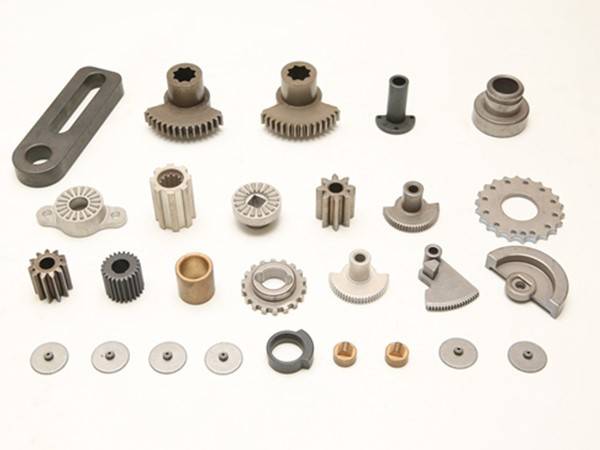
Superalloys also benefit significantly from vacuum sintering. These materials, known for their high-temperature strength and resistance to corrosion, require a sintering environment that can maintain their integrity under extreme conditions. The vacuum environment aids in achieving the necessary densification and microstructural homogeneity, which are essential for the performance of superalloys in aerospace and other high-stress applications.
Additionally, ceramic materials undergo significant improvements in their properties through vacuum sintering. The process helps in removing oxide films and improving the wettability between different phases, leading to enhanced material properties such as hardness, toughness, and thermal stability. This makes vacuum sintering furnaces indispensable in industries where ceramics are used for high-performance applications, such as in electronics and advanced manufacturing.
| Material Type | Key Benefits of Vacuum Sintering |
|---|---|
| Powder Metallurgy | Uniform distribution and consolidation of powders; precise control over microstructures |
| Cemented Carbides | Enhanced purity, improved strength, and wear resistance |
| Superalloys | High-temperature strength, resistance to corrosion, improved densification and microstructure |
| Ceramic Materials | Removal of oxide films, improved wettability, enhanced hardness, toughness, and thermal stability |
Related Products
- Vacuum Heat Treat and Pressure Sintering Furnace for High Temperature Applications
- Small Vacuum Heat Treat and Tungsten Wire Sintering Furnace
- Vacuum Dental Porcelain Sintering Furnace
- Vacuum Hot Press Furnace Heated Vacuum Press Machine Tube Furnace
- Vacuum Hot Press Furnace Machine Heated Vacuum Press
Related Articles
- Vacuum Hot Press Furnace: A Comprehensive Guide
- How Vacuum Induction Melting Ensures Unmatched Reliability in Critical Industries
- How Vacuum Induction Melting (VIM) Transforms High-Performance Alloy Production
- How Vacuum Induction Melting Outperforms Traditional Methods in Advanced Alloy Production
- Exploring Spark Plasma Sintering Furnace (SPS): Technology, Applications, and Advantages
